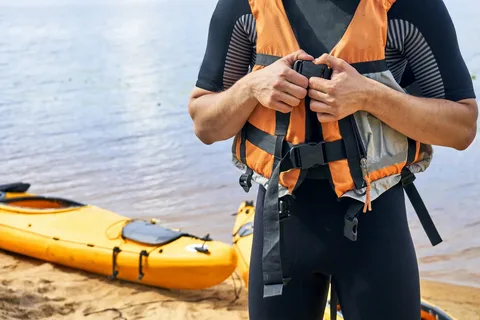Kayaking is an incredibly rewarding activity that allows you to explore waterways and nature from a unique perspective. However, it comes with its inherent risks, primarily the danger of falling into the water. This is why choosing the right life jacket, also known as a personal flotation device (PFD), is crucial for any kayaking adventure. A suitable life jacket not only ensures your safety but also enhances your paddling experience. This detailed guide will walk you through the essential considerations for selecting the right life jacket for your kayaking journey.
Understanding Life Jacket Types
The U.S. Coast Guard classifies life jackets into five types based on their buoyancy, design, and intended use. For Life Jackets for Kayaking, the most relevant types are:
- Type III: Flotation aids designed for general boating or the specialized activity that is marked on the device, such as kayaking. They are ideal for calm, inland water where there is a high chance of quick rescue.
- Type V: Special use devices that include life jackets designed specifically for paddling, kayaking, or other water sports. When properly used, they provide similar buoyancy to Type III but are tailored for specific activities and conditions.
Key Features to Look for
When selecting a life jacket for kayaking, pay attention to the following features to ensure safety, comfort, and convenience:
- Fit and Size: A properly fitting life jacket is paramount. It should be snug but not restrictive, allowing full range of motion for paddling. Check the manufacturer’s sizing chart and try on several models with the clothes you’ll be paddling in.
- Buoyancy: Adequate buoyancy is essential to keep you afloat. Most adults need an additional 7 to 12 pounds of buoyancy from their PFD. Ensure the life jacket you choose meets this requirement.
- Mobility: Kayaking requires arm and shoulder mobility. Look for life jackets with large armholes and minimal bulk around the shoulders and chest.
- Visibility: Bright colors can significantly increase your visibility in the water, making it easier for others to spot you in case of an emergency.
- Ventilation: Paddling can be strenuous, and a life jacket with good ventilation can help keep you cool. Mesh backs and vented panels are excellent features for warmer weather.
- Pockets and Attachments: Handy for storing essential items like snacks, sunscreen, or a whistle. Some life jackets also include attachment points for safety gear like a knife or strobe light.
How to Choose the Right Size
Fit is crucial for a life jacket’s effectiveness. Follow these steps to ensure a proper fit:
- Measure Your Chest: Adult life jacket sizes are based on chest measurements. Measure your chest at its broadest point and match this measurement to the life jacket’s sizing chart.
- Try It On: Adjust all straps to fit snugly. A properly adjusted life jacket should feel secure but not too tight.
- Check for Movement: Lift your arms overhead; the jacket should stay in place and not ride up over your chin or face. Ask a friend to gently pull up on the shoulders of the jacket to ensure it doesn’t slip over your head.
Testing Your Life Jacket
Before heading out, it’s wise to test your life jacket in a controlled environment:
- Float Test: In shallow water, relax your body to check if the jacket keeps your head above water and allows you to breathe easily.
- Swim Test: Make sure you can comfortably paddle, swim, and re-enter your kayak while wearing the jacket Wild Camping Tents.
Maintenance and Care
To ensure your life jacket remains in good condition and performs when needed, follow these maintenance tips:
- Rinse After Use: Saltwater and dirt can degrade the fabric and fastenings over time. Rinse your life jacket with fresh water after each use.
- Dry Properly: Allow it to dry completely in a well-ventilated area out of direct sunlight before storing.
- Regular Inspection: Check for tears, frayed straps, or broken zippers and buckles. Ensure it’s free of mold and mildew.
- Proper Storage: Store your life jacket in a dry, cool place away from direct sunlight. Avoid storing it compressed under heavy objects to maintain its buoyancy.
Legal Requirements
It’s important to note that wearing a life jacket is not just a safety measure—it’s also a legal requirement in many areas for all water activities, including kayaking. Ensure you’re familiar with and comply with local laws and regulations regarding life jacket usage.
Conclusion
Selecting the right life jacket is a critical step in preparing for any kayaking adventure. It’s not just about meeting legal requirements; it’s about ensuring your safety in the water. By understanding the types of life jackets available, knowing what features to look for, and ensuring a proper fit, you can enjoy your time on the water with peace



